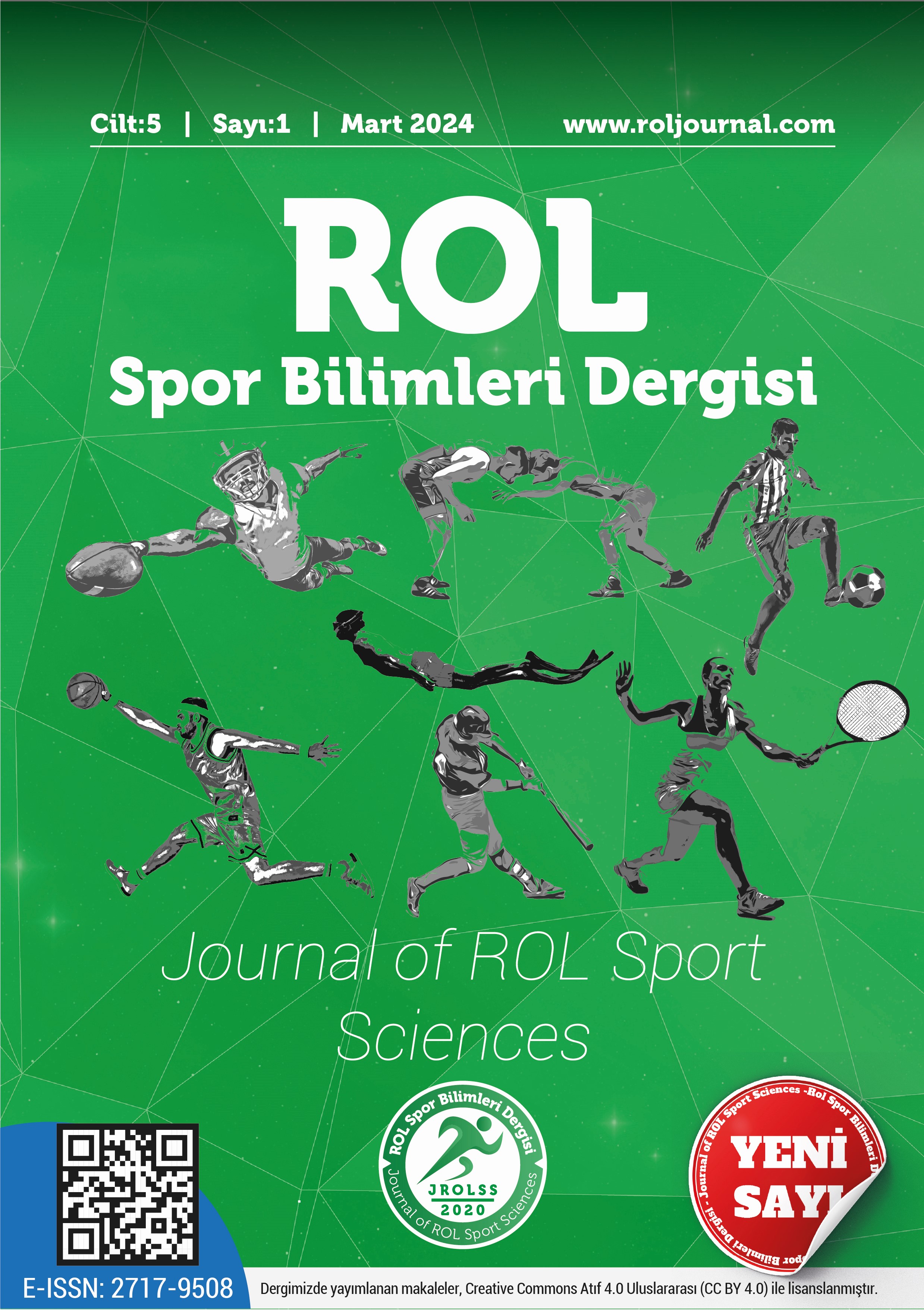The effect of 8-week submaximal strength training on accuracy rate of rifle shooting on the personnel of gendarmerie commando units
DOI:
https://doi.org/10.5281/zenodo.10886485Keywords:
Aerobic, Shooting, Accuracy, Gendarmerie, Commando, StrengthAbstract
The aim of this study was to examine the effect of 8 weeks of submaximal strength training on the shooting accuracy of personnel serving in the Gendarmerie Commando Units. 80 participants volunteered for this study. Aerobic endurance was assessed using a 20-meter shuttle run test, while maximal strength tests (1RM) were obtained through the repetition method. The shooting test involved 3 unsupported shots from a prone position at a distance of 200 meters after a 1000-meter rifle run with equipment within 6 minutes. Strength parameters included squad, bench press, leg extension, lat pull down, leg curl, triceps push down, butterfly and seated chest press. The intensity of the strength training was set at 80-85% for the initial 4 weeks and 90% for the last 4 weeks. The protocol consisted of 3 sets of 6 repetitions with a rest period of 3 minutes. The experimental group followed the strength training protocol, while the control group engaged in the regular sports activities included in their daily training program. Following the eight weeks of training, the shooting test, 20-meter shuttle run test, and strength parameters including 1RMs were measured as the final assessments. Paired sample t-tests were used for within-group pre-test and post-test values, while independent sample t-tests were employed for between-group analyses. The shooting test results revealed that the experimental group achieved an average of 2.37±0.58 hits on target, whereas the control group achieved 1.47±0.71 hits. Consequently, it was observed that the applied strength training had a positive effect on 1RMs and shooting accuracy.
References
Atasever, G. (2019). Elit biathlon sporcularında nabız aralıklarına göre hedef atış isabet yüzdelerinin karşılaştırılması. [Yüksek Lisans Tezi, Atatürk Üniversitesi].
Ball, K., Best, R. &Wrigley TV. (2003). Body sway, aim point fluctuation and performance in rifle shooters: Inter- and intra individual analysis. Journal of Sport Science 21, 559- 566.
Brown M. J., Tandy, R. D., Wulf, G. & Young, J. C. (2013). The effect of acute exercise on pistol shooting performance of police officers. Motor Control, 17(3), 273-282.
Brzyckı M. (1993). Strength testing-predicting a one-rep max from reps-to-fatigue. Journal Of Physical Education, Recreation & Dance, 64(1), 88-90.
Carlton, S. D. & Orr, R. M. (2014). The impact of occupational load carriage on carrier mobility: A critical review of the literature. International Journal Of Occupational Safety And Ergonomics, 20(1), 33-41.
Dündar, U. (2015). Antrenman Teorisi. 9. Basım.
Erdoğan, M., Sağıroğlu, İ., Şenduran, F., Ada, M. & Ateş, O. (2016). Elit atıcıların el kavrama kuvveti ile atış performansları arasındaki ilişkinin incelenmesi. İstanbul Üniversitesi Spor Bilimleri Dergisi, 6(3), 22-30
Evans, R. K., Scovılle, C. R., Ito, M. A. & Mello, R. P. (2003). Upper body fatiguing exercise and shooting performance. Military Medicine, 168(6), 451-456.
Gıl-Cosano, J., Orantes-Gonzalez, E. & Heredıa-Jımenez, J. (2019). Effect of carrying different military equipment during a fatigue test on shooting performance. European Journal Of Sport Science, 19(2), 186-191.
Günay, M. & Mansur, O. (1999). Artan direnç egzersizleri ve genel maksimal kuvvet antrenmanlarının kuvvet gelişimi, istirahat nabzı, kan basınçları, aerobik-anaerobik güç ve vücut kompozisyonuna etkileri. Gazi Beden Eğitimi ve Spor Bilimleri Dergisi, 4(4), 21-31.
Hoffman, M. D., Gılson, P., Westenburg,T. & Spencer, W. (1992). Biathlon shooting performance after exercise of different intensities. International Journal Of Sports Medicine, 13(3), 270-273.
Kelleran, K. J., Sloniger, M. A., MacDonald, H. V. & Watkins, B. A. (2011). Effect of an acute bout of intense physical exertion on shooting accuracy in police officers: current and recruits. Medicine and Science in Sports and Exercise, 43(5), 704
Ito, M., Sharp, M., Johnson, R., Merullo, D. & Mello, R. (1999). Rifle shooting accuracy during recovery from fatiguing exercise. U.S. Army Research Institute of Environmental Medicine.
Leger, L. A. & Lambert, J. (1982). A maximal multistage 20-m shuttle run test to predict VO2max. European Journal Of Applied Physiology And Occupational Physiology, 49(1), 1-12.
Mirzakhani, N., Haddadiniya, A., Aghdaei, M., Shamsipour Dehkordi, P., & Pashmdarfard, M. (2023). Predicting the Shooting Accuracy of Soldiers Based on Physical Fitness Factors and Brain-Behavioral Personality Traits. Iranian Journal of War and Public Health, 15(2), 159-165.
Ojanen, T., Häkkinen,K., Hanhikoski, J. & Kyröläinen, H. (2020). Effects of Task-Specific and Strength Training on Simulated Military Task Performance in Soldiers. International Journal of Environmental Research and Public Health 17(21): 8000.
Ramsbottom, R., Brewer, J. & Williams, C. (1988). A progressive shuttle run test to estimate maximal oxygen uptake. British Journal Of Sports Medicine, 22(4), 141-144.
Robınson, J., Roberts, A., Irvıng, S. & Orr, R. (2018). Aerobic fitness is of greater importance than strength and power in the load carriage performance of specialist police. International Journal Of Exercise Science, 11(4), 987.
Selçuk, M., Bilen, M., Temur, H. B. & Öner, S. (2018). Türk biathlon milli takiminda yer alan sporcularin bazi kuvvet değerlerinin atiş performansina etkilerinin incelenmesi. Gaziantep Üniversitesi Spor Bilimleri Dergisi, 3(1), 54-63.
Downloads
Published
How to Cite
Issue
Section
License
Copyright (c) 2024 Journal of ROL Sport Sciences

This work is licensed under a Creative Commons Attribution 4.0 International License.

